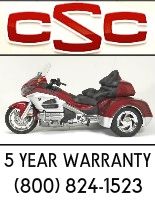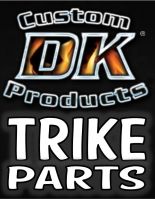DK Custom Products
Sponsor
kevin most of the talk is about running in hot climates I run a 2016 tri up here in Canada (Rocky Mountains of BC) and don't see a lot of high heat and am wondering if I would see a real benefit to adding the oil cooler (am planning a run to Alaska next summer though) most of my runs are hwy at about 225 miles each.thanks daryl.
Hi Daryl,
First off- Wow! What a great place to be able to ride! Dunno if I would want to be there in the winter. But we've spent a little time in the Rockies of BC and it IS AMAZING riding around up there!
My goal is to have my synthetic oil run between 210-230*. If I was running Dino oil I would be shooting for 190-210*.
These temps are measured at the dipstick.
On an air-cooled only Twin Cam I want to see my head temp between 210-230* also. If it is a Twin-Cooled, it should be 200-220*. (measured by the factory heat sensor that is at the back left of the front cylinder head)
The above temps are after 1 hour of solid running down the road, or 30 minutes in stop-n-go traffic.
I Never want to see oil temps or head temps over 250*, even in an extreme circumstance...that is when bad stuff starts happening.
So if your temps (oil & head) are staying below 250*, then I would not do anything, if they are going above, then I would look at the various things that can be done to cool things down. Here's a LINK to some good info on the subject.
So what is the best way/place to take a temperature??
The dipstick or there is a port at the bottom of the crankcase for an oil temp sensor. If you use the port in the crankcase, the oil will generally be about 5* warmer than at the dipstick.
I am curious as well, what temperature burns offs the impurities.
210* is going to burn everything off that will (that you want to) burn off.
Kevin






